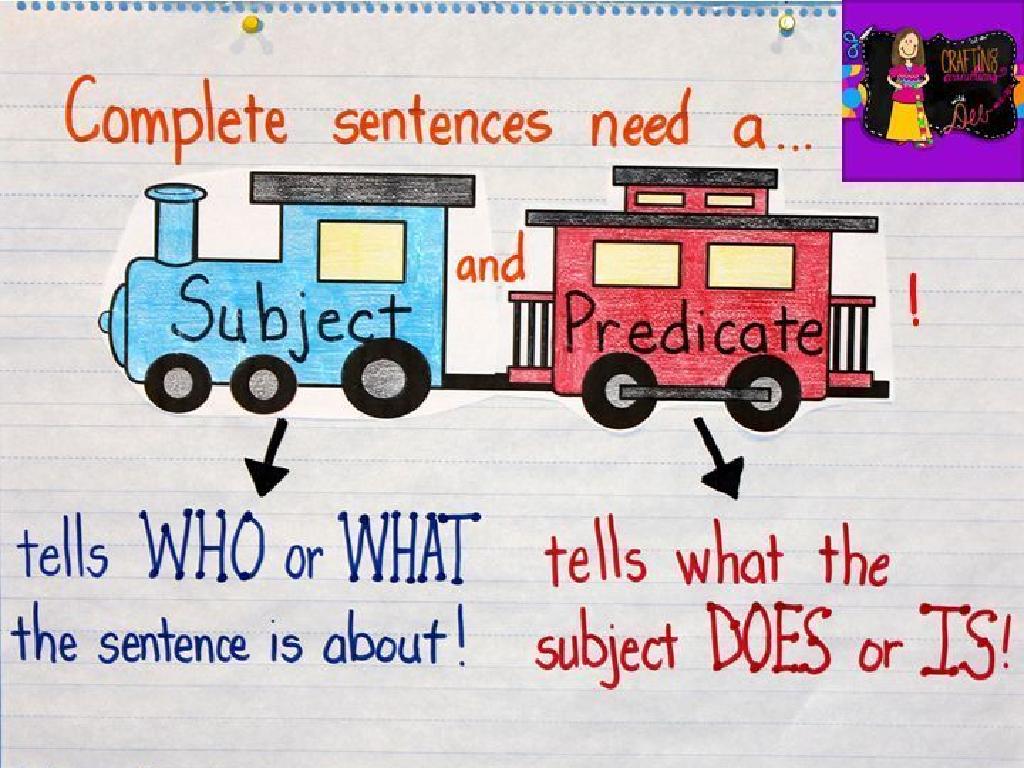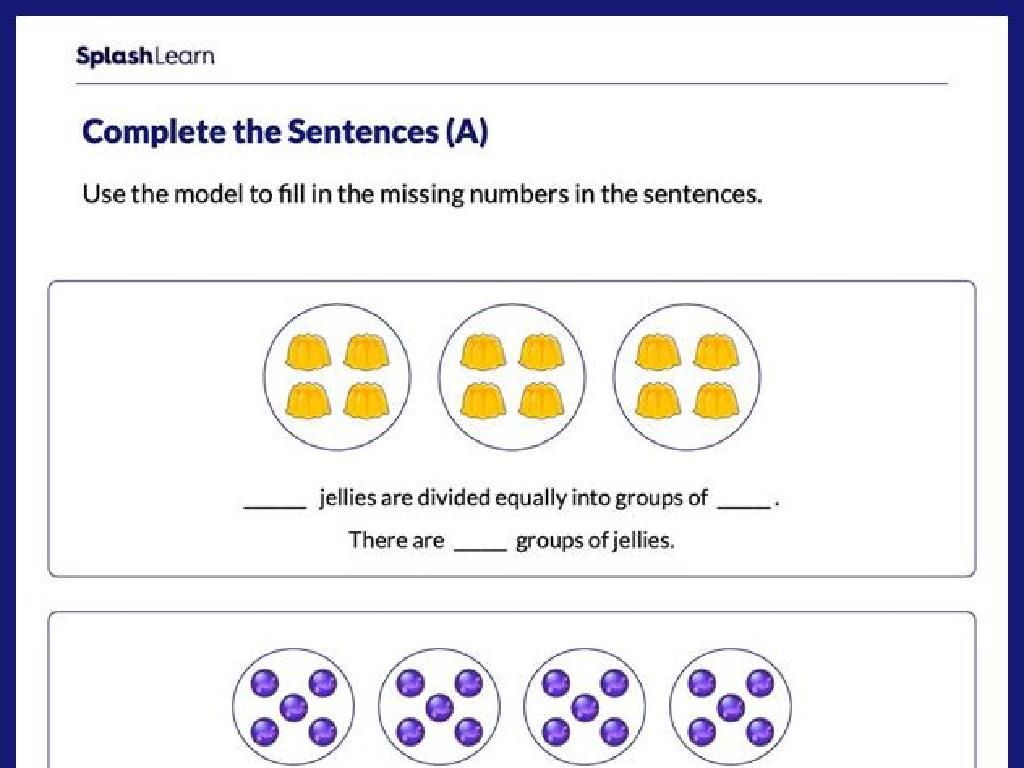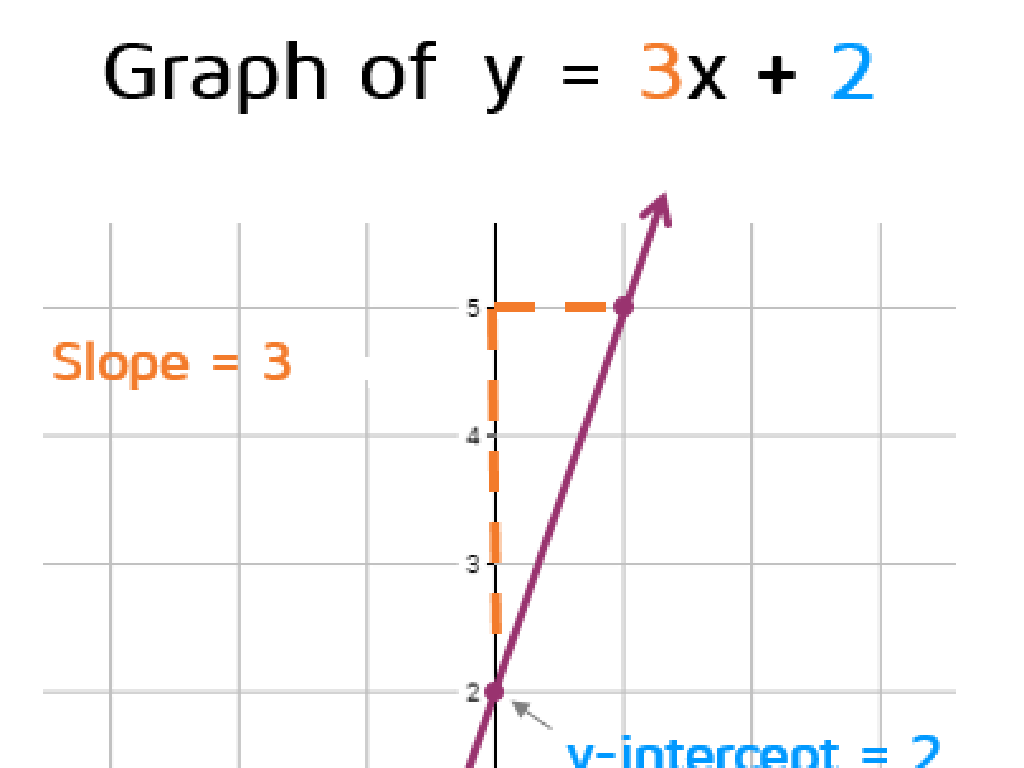Inequalities With Decimal Multiplication
Subject: Math
Grade: Sixth grade
Topic: Multiply And Divide Decimals
Please LOG IN to download the presentation. Access is available to registered users only.
View More Content
Introduction to Inequalities with Decimals
– Understanding Inequalities
– Inequalities show how numbers are not equal and can be less than or greater than each other.
– Inequalities and Decimals
– When multiplying decimals, inequalities help us compare the size of products.
– Real-life Inequality Examples
– Budgeting allowance or comparing distances are everyday examples of inequalities.
– Practice with Decimal Inequalities
|
This slide introduces the concept of inequalities and their application to decimal multiplication. Begin by explaining that inequalities are statements that show the relationship between values that are not equal, using symbols like , d, and e. Illustrate how these concepts apply to decimals, especially when multiplying. Provide relatable examples such as budgeting a weekly allowance or comparing distances to show how inequalities are used in everyday life. Conclude with practice problems that involve multiplying decimals and placing them in the correct inequality to solidify the students’ understanding.
Review: Multiplying Decimals and Inequalities
– Recap decimal multiplication
– Align the numbers by place value, then multiply as with whole numbers.
– Significance in inequalities
– Understanding how to multiply decimals is crucial for solving inequalities involving decimals.
– Class practice problem
– Solve 0.3 * 0.4 < 0.3 * x together as a class.
– Discuss solutions together
|
Begin with a quick review of the steps involved in multiplying decimals, emphasizing the alignment of numbers by place value and ignoring the decimal point initially. Highlight the importance of this skill in understanding and solving inequalities, as it allows students to compare the relative size of products involving decimals. Engage the class with a practice problem, such as 0.3 * 0.4 < 0.3 * x, and solve it together, encouraging participation. Discuss the correct placement of the decimal point in the product and how to determine the range of values for x that satisfy the inequality. This interactive approach helps reinforce the concept and prepares students for more complex problems.
Inequalities and Decimal Multiplication
– Effects of decimal multiplication
– Multiplying by a number >1 increases, <1 decreases value
– Inequality symbols and meaning
– Greater than, less than, or equal to signs
– Multiplying without altering inequality
– Keep the inequality same when multiplying by positive numbers
– Practice with real examples
|
This slide introduces the concept of how multiplication by decimals can affect the direction or sense of an inequality. It’s crucial for students to understand that multiplying by a number greater than one will increase the value on both sides of the inequality, while multiplying by a number less than one will decrease it. Emphasize the meaning of the inequality symbols and ensure that students know that the inequality remains unchanged when multiplying by a positive number. Provide practice examples such as 0.5x > 2.5 and ask students to solve for x, reinforcing the concept that the inequality does not flip when multiplying by a positive decimal.
Solving Inequalities with Decimal Multiplication
– Steps to solve decimal inequalities
– Isolate variable, multiply/divide, check solution
– Example: 0.5x > 1.5
– Divide both sides by 0.5 to find x > 3
– Maintain inequality direction
– Flipping the inequality sign when multiplying/dividing by a negative number
– Finding the range of x
– x must be greater than 3 to satisfy 0.5x > 1.5
|
Begin by explaining the step-by-step method to solve inequalities, emphasizing the need to isolate the variable. Use the example 0.5x > 1.5 to demonstrate the process, dividing both sides by 0.5 to find the solution x > 3. Highlight the importance of maintaining the direction of the inequality unless multiplying or dividing by a negative number, which would flip the inequality. Conclude by discussing how to interpret the solution, explaining that x can be any number greater than 3 to satisfy the inequality. Encourage students to practice with similar problems to reinforce their understanding.
Solving Decimal Inequalities
– Solve 3.2x d 6.4
– Divide both sides by 3.2 to find x
– Solve 0.8x > 2.4
– Divide both sides by 0.8 to find x
|
This slide presents two practice problems to help students apply their knowledge of inequalities with decimal multiplication. For the first problem, guide the students to divide both sides of the inequality by 3.2 to isolate x, which will help them understand the balance needed in inequalities. For the second problem, instruct them to divide by 0.8, reinforcing the concept that the inequality sign flips when both sides are divided by a negative number. Encourage students to work through these problems step-by-step and to check their answers by substituting the value of x back into the original inequality. Provide additional similar problems for students who finish early or need extra practice.
Class Activity: Inequality Challenge
– Create decimal multiplication inequalities
– Exchange problems with another group
– Solve the exchanged inequalities
– Present solutions and reasoning
– Explain each step taken to solve the inequality and why it works
|
This activity is designed to foster collaboration and deepen students’ understanding of inequalities involving decimal multiplication. Divide the class into small groups and have each group create several inequalities that involve multiplying decimals. Once the groups have their problems, they will exchange with another group and work on solving the new set of inequalities. After solving, each group will present their solutions to the class, explaining the steps they took and the reasoning behind their approach. As a teacher, facilitate the exchange to ensure each group gets a problem of appropriate difficulty and guide them through the presentation process. Possible activities could include creating word problems, using real-life scenarios, or incorporating other mathematical concepts to challenge advanced students.
Conclusion: Mastering Decimal Multiplication Inequalities
– Review of decimal multiplication inequalities
– Significance of understanding inequalities
– Grasping inequalities is crucial for advanced math topics.
– Homework: 5 inequality problems
– Solve problems like 0.3x > 1.2 to strengthen skills.
– Practice reinforces concept mastery
|
As we wrap up today’s lesson, it’s important to revisit the key points of multiplying decimals within inequalities. Understanding this concept is vital as it lays the groundwork for algebra and helps in solving real-world problems. For homework, students are assigned to solve five problems involving inequalities with decimal multiplication, such as ‘0.3x > 1.2’. This practice will help solidify their comprehension and prepare them for more complex mathematical challenges. Encourage students to approach their homework with the strategies learned in class and to reach out if they encounter any difficulties.






